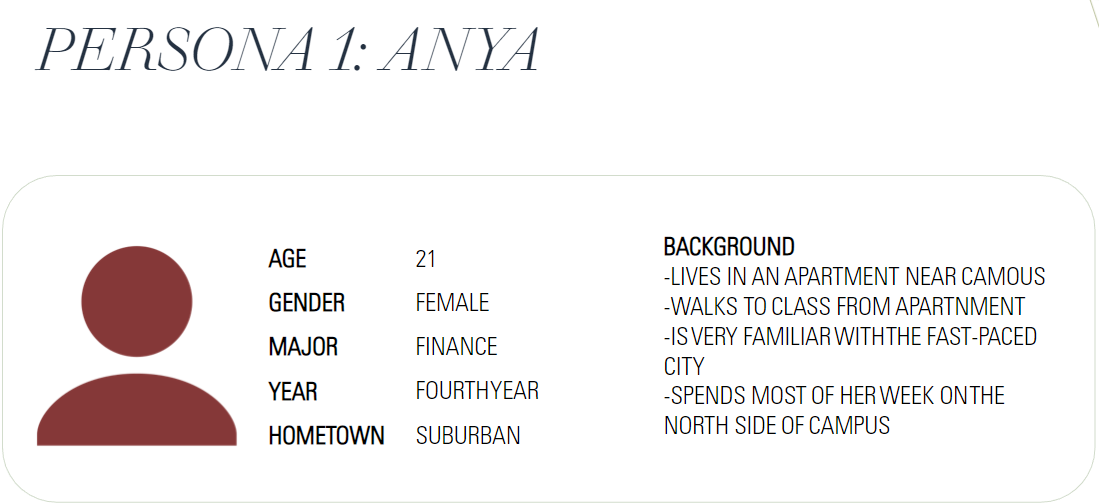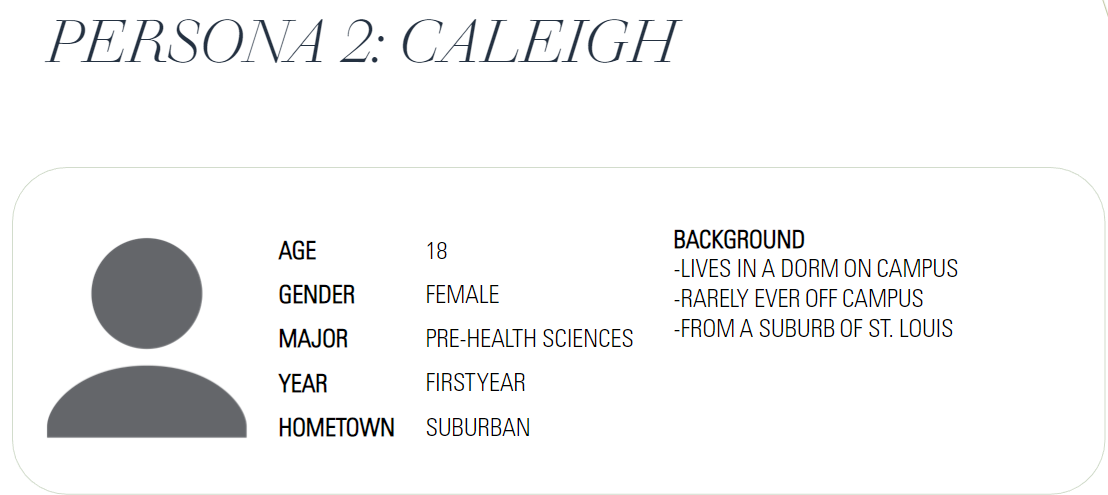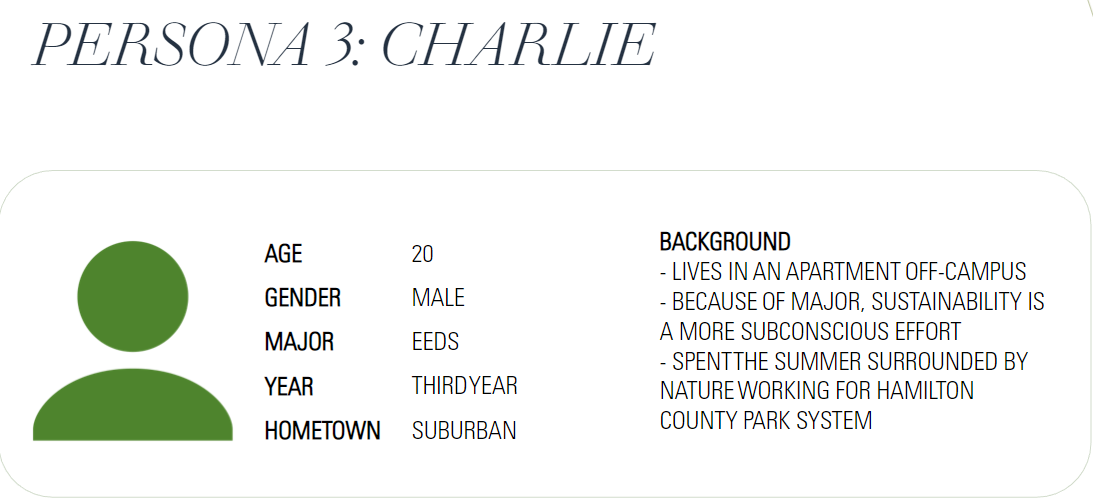The beginning of the semester was heavily focused on research, specifically campus related. This section of my portfolio also aligns with the Denney Hall portion of my portfolio. All of this research was conducted with classmates.
3rd Space Research
The first topic introduced was Third Space Design. This research was done in collaboration with Abbigail VanHoose.
We defined third spaces as a place where living, learning, and work come together and interact within the same space. It can also include a destination that is unassigned, a setting that provides new scenery, or a place that is not one's home or work. We also discovered Ray Oldenburg's research on these spaces and were able to find that they should include conversation as the main activity, accessibility, and accommodation, a playful mood, and neutral ground.
Examples of 3rd Spaces
My partner and I found that third spaces offer these benefits: increased co-working with more effective interactions, increases productivity, people benefit from a change of scenery and informal spaces, and the ability to collaborate, a 3rd space also encourages breaks, which positively affects employees, as they are more productive after a break, provides a more relaxed and inspiring work environment, encourages a better work-life balance, increases staff morale and motivation, provides a space for passive social learning, provides feelings of inclusivity and belonging, and lessens expectations/pressures from work and home places.
Lastly, we determined that these factors are what make a third space: biophilia, including sunlight, allows for various working types, should be able to feel inspired and productive, unique furniture that is not featured in a work/home setting Ex. standing desks, lounge chairs, collaborative seating, free wifi, mobility, easy to access and move from spot to spot.
Campus Sustainability
For the second research topic, my group was tasked with researching sustainability and "What does the ideal future sustainable campus look like to college students?" This research was done in collaboration with Mollie Kunar, Abbigail VanHoose, Morgan Vereb, & Averi Wolf.
To begin the research, we hand-picked participants and had them do homework, which consisted of completing a survey and daily log, and then we had a workshop, which had an in-person discussion, a campus mapping activity, and a collective visioning activity.
Participants & Preconceptions




Survey & Key Insights
For the next step, we sent out a survey on different social media platforms such as Instagram and Reddit. We asked participants to think about their current sustainable practices as well as what they would like to see on campus in the future.
Daily Log: "A Day in Your Life"
Next, we asked our participants to fill out a log that recorded their actions during a day when they were on campus, focusing primarily on what they did that was sustainable and what else they wish they had access to.
Group Discussion & Insights
Before starting our next two activities with our participants, we had a group discussion to get everyone in the mindset of thinking creatively about sustainability.
Collective Visioning & Insights
Our second activity had participants collaborate on a bullseye collage encapsulating their ideal future, sustainable campus.
Campus Mapping
Our last activity had participants translate their ideas from the collective visioning exercise onto a map of campus. We asked them to each pick one picture and place a pin on the map where they would want this idea to be implemented.
Outcomes
Campus Strategy
The next step in the research process was to expand on what we learned in the last part and then create insertions around campus. This research was conducted with the group from the last section and we looked at sustainability again.
Problem Statement
Every student comes to college with a different level of prior exposure to the natural environment and sustainability knowledge. Ohio State's current sustainability efforts cater to those who are already personally motivated to participate in sustainable practices.
Focus:
Attracting students who are not already inclined to protect the environment.
Concept Statement
Driving question:
How do we encourage students to value the natural environment in an effort to increase self-motivated sustainability?
"Cultivating personal relationships with the natural environment"
Strategies
Interactive
Exposure to nature through hands-on, immersive experiences, actively learning, and engaging with the natural environment in and outside of the classroom.
Informative
Knowledge and learning-based approach, educating students about the natural environment and sustainable practices in a straightforward way.
Innovative
Staying on the cutting edge of sustainable technology, and understanding that incoming students increasingly interact through new tech & using it to cater to the college lifestyle.
Incentivize
Encouraging sustainable behavior outside of a relationships approach, supporting strategy, and motivating students through the promise of personal reward.
Visual Positioning Board
Insertions
Produce Union with a Farmer's Market
A mini grocery store with locations in each main part of the campus that uses BuckID, App points, or personal modes as payment. The produce will be sourced from the Ag campus, Campus gardens, and local farmers. This will branch off into Farmer's Market in the warmer months.
Mobile Community Garden
This is a movable, raised-bed garden on wheels with herbs, vegetables, fruits, etc. that can be grown and harvested by students. This is an interactive and hands-on learning experience that will provide campus jobs and volunteer opportunities.
Recharge Stations
This is a solar-powered recharging station with a water bottle filler that encourages students to spend time in nature. This will transform to a closed, heated space during the winter to keep students immersed in nature
Incentivizing Recycling App
-The app connects to recycling bins, solar panel stations, etc. around campus and uses a point-and-tier system. Rewards will include reusable bags and containers, gift cards, and money towards the Produce Union. It will remind users to recycle when in certain locations and will provide a map with insertion locations.
Information Graphics Package
The package creates a cohesive graphic identity for the university's sustainable efforts which reinforces the emphasis on approachability through color and style. It is eye-catching, with "Instagrammable" moments, and is more effective signage for everyday sustainable practices.
Persona's and User Journey's
Name: Emily
Age: 19
Pronouns: She/Her
Major: Dance
Emily starts her day early at her dorm on North Campus by checking her blog statistics as well as her other social media feeds. She then walks to class, grabbing an iced coffee from Connecting Grounds on the way. She films a TikTok and thinks of new blog prompts on her walk as well. She is thinking of writing one for the new app on campus, CultivateOSU. After finishing her coffee, she uses the app to open up a recycling bin and earns points for her cup and straw. On her way home from class, she stops by the SOLAR STATION to fill her reusable water bottle and take pictures for her Instagram. Finally, she stops by the FARMERS MARKET to film more content and grab fresh produce for her dorm.
Name: Chad
Age: 22
Pronouns: He/Him
Major: International Business
Chad wakes up late for class in his off-campus apartment. He quickly grabs a protein shake and granola bar for breakfast and goes to class. He is taking an agriculture class, and his professor is teaching them how to use and maintain one of the new MOBILE COMMUNITY GARDENS located on campus. Chad is really interested and considers signing up to volunteer to take care of the garden.
After class, Chad parks near the main campus to grab lunch. He refills his water bottle at the SOLAR STATION and uses CultivateOSU to open the recycling bin for his food wrappers. He loves getting points for recycling, and it has been helping and teaching him to become more sustainable.
Name: Mai
Age: 26
Pronouns: They/Them
Major: Graduate Student in Film Studies
Mai commutes 15 minutes to class every day from their apartment in Dublin. They make coffee in their reusable mug, packs their lunch, and fills up their reusable water bottle before heading out for class.
After class, Mai grabs matcha and sits down at the SOLAR STATION to eat their lunch. Mai loves this spot because it gives them a unique and aesthetically pleasing place to sit and do work between classes, as well as refill their water bottle. Mai just got introduced to CultivateOSU and uses it for the first time to recycle their matcha cup. She plans to use this a lot as recycling is second nature to her. Mai also stops by the PRODUCE UNION after class to bring home some fresh produce for the week. Mai loves these new sustainable additions to Ohio State's campus.
Name: Malaki
Age: 37
Pronouns: He/Him
Fashion Professor
Malaki commutes to work twice a week from his apartment in the Short North. Before he goes, he packs a lunch and a reusable water bottle for the day. After he is done teaching, he walks to the nearest MOBILE COMMUNITY GARDEN where another professor is teaching about how to use it. Malaki has been excited about these since they were introduced, he has always wanted to learn how to garden. He really wants to incorporate the mobile gardens into his personal life as well as with his students. After this, he sits down at a SOLAR STATION to eat his lunch. To end his day, he stops by the PRODUCE UNION to grab some fresh fruits and vegetables for dinner.
Building Strategy: Stillman & Denney
The last part of the research that was done was looking at two different buildings and seeing the connections that they had, while also focusing on the problems within them. This research was done in collaboration with Lydia Arman, Shaharah Barnett, Robbie Goldsmith, Abbigail VanHoose, & Sabrina Yen.
Stillman Hall
Stillman Hall was constructed by the Works Progress Administration (WPA), with construction initially starting in early 1936. The building opened for classes in the Autumn of 1937, with a total of 29,302 sq ft. As the university began modifying buildings to accommodate the physically handicapped, an elevator was added on the north side of the building in 1978. The building is known as the College of Social Work and was officially named on January 14, 1952, to honor a professor of social administration and director of the School of Social Work, Charles C. Stillman.
Floor Plan
Persona's
Name: Ellen
Age: 19 years old
Pronouns: She/Her
Major: Social Work
Ellen is in her first year at OSU. She is a traditional student studying social work with the majority of her classes taking place in Stillman. This means she spends a lot of her time there and is comfortable within the building. She loves utilizing the 3rd spaces within Stillman when she gets to her classes early or when she is waiting in between classes.
Name: Cameron
Age: 22 years old
Pronouns: He/Him
Major: Industrial Design
Cameron is in his last year at The Ohio State University. He has grown tired of the Hayes Hall lobby and decided to utilize the Stillman 3rd spaces to rest in between his classes. He only has an hour in between classes so the location of Stillman is perfect for him to get a break from Hayes Hall without traveling too far.
Denney Hall
Construction on Denney Hall began in mid 1958 and there is a documented completion date of February I, 1960. It has a total of 106,632 sq ft. The official name of the building is "Joseph Villiers Denney Hall", and it is home to the Department of English. Those who worked on the project are listed here:
General: George W. Lathrop and Sons, Inc.
Electrical: McCarty Brothers Electric Co. Heating and
Ventilating: Huffman-Wolfe Plumbing: Piping Contractors CO.
Floor Plan
Basement Floor Plan
Second Floor Plan
Persona's
Name: Noah
Age: 25-year-old
Pronouns: He/Him
Major: English
Noah is a nontraditional commuting student who is very introverted. He likes to stay in areas he is familiar with, which is why he spends the majority of his time in the Denny 3rd space hallway. In this space, he is able to relax in between classes and eat the lunch that he brought from home.
Name: Kiara
Age: 20 years old
Pronouns: She/Her
Major: Journalism
Kiara is a second-year journalism major who likes to utilize the digital union space that is in Denny Hall. Sometimes, however, she gets there before it's open and wants to hang out in the building while she waits. She enjoys the lounge spaces that allow her to relax and work on schoolwork.
Key Stakeholders
Problem Statement
Both Stillman and Denny carry several of the same issues. As second spaces they do not fulfill the needs of their students, lacking engaging and comfortable space design. As well, neither of their third spaces serves productivity or socialization.
Current Obstacles
Wayfinding
- No wayfinding within Stillman
- Only signs in Denny
Biophilia
- Lack of biophilic elements in both buildings
Furniture
- Current furniture is uncomfortable
- Not functional (work surfaces)
Multi-functional Spaces
- Currently no space for privacy
Purpose Statement
To create a functional environment for the various uses that the third spaces with Stillman and Denny have.
Design Strategies
Intuitive Wayfinding
- Include graphics and color coding
Biophilia
- Include things such as:
biomimicry, colors, lighting, plants, materials
Functional Furniture
- Include furniture that allows:
comfortability (rest), working surfaces, charging devices
Multi-Functional Spaces
- Include spaces that have:
various sizes of spaces (prospect -vs- refuge), different sound volumes, personal working styles
Visual Positioning Board